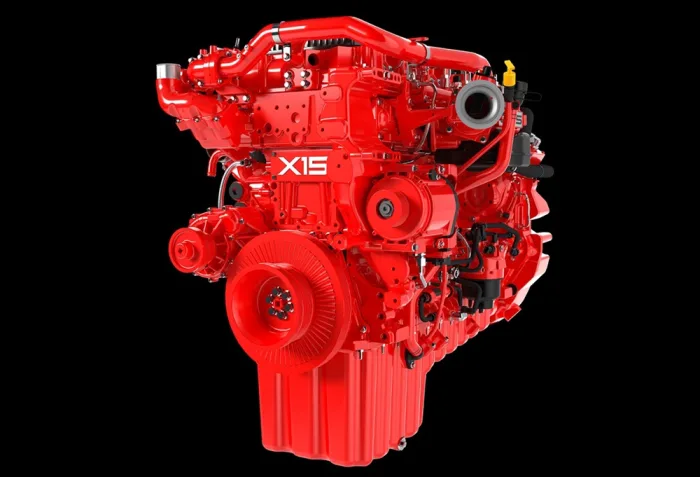The new HELM version of Cummins’ X15 diesel engine


Cummins’ present stable of EPA24-compliant X15s carried over largely the same specs as the EPA21 variants. The 2024 X15 comes in three flavors depending on the application.
The Efficiency Series leads off the range with an output of 400-500 hp and a torque range of 1,450-1,850 lb-ft . The Performance Series is the middle child with a power rating of 525-565 hp and 1,650-2,050 lb-ft of torque.Topping the range is the Productivity Series, which ranges from 430-605 hp (320-451 kW) and 1,650-2,050 lb-ft (2,237-2,779 Nm).
All three variants feature a variable geometry turbocharger (VGT) that reportedly offers higher boost pressures at lower engine speeds. Cummins states that the 7th generation VGT provides 5% higher turbocharger efficiency through new wheel options and a multi-clearance shroud. The current-generation VGT also features a patented sliding nozzle ring.
Forward thinking
With the latest X15, Cummins has exhausted a lot of resources and engineering hours to produce a powertrain that still meets customer expectations while also satisfying the looming North American regulations that go into effect in 2027.
The importance of the latest X15 is that meeting those new NOx regulations but still offering improved fuel economy and similar DEF consumption.”
Big change: Heat treatment
One of the most significant changes for the 2027 HELM X15 diesel engine compared to the current EPA24 unit is on the aftertreatment side of the package. The 2024 X15 engines utilize a single module aftertreatment system. The EPA 2027-compliant X15s will move to a new twin module aftertreatment package that reportedly achieves drastically lower emissions levels while using the same basic technology.
Another significant update for the new X15 aftertreatment system is the addition of an integrated heating element. Cummins states that this approach allows for engine efficiency and performance to be optimized without compromising thermal management. Independent heating of the aftertreatment system enables a reduction in NOx without necessitating a major increase in catalyst volume to meet the new regulations.
The electric heating system brings the catalyst to operating temperatures more quickly at startup, which improves low-temperature performance and minimizes nitrous oxide (N2O) emissions. N2O is more strictly regulated by the EPA in its Phase 3 greenhouse gas regulations and is penalized >250x more than CO2.
The heating element also enables on-demand thermal management. Cummins states that this system is scalable to also meet future regulator changes and is completely maintenance-free.
